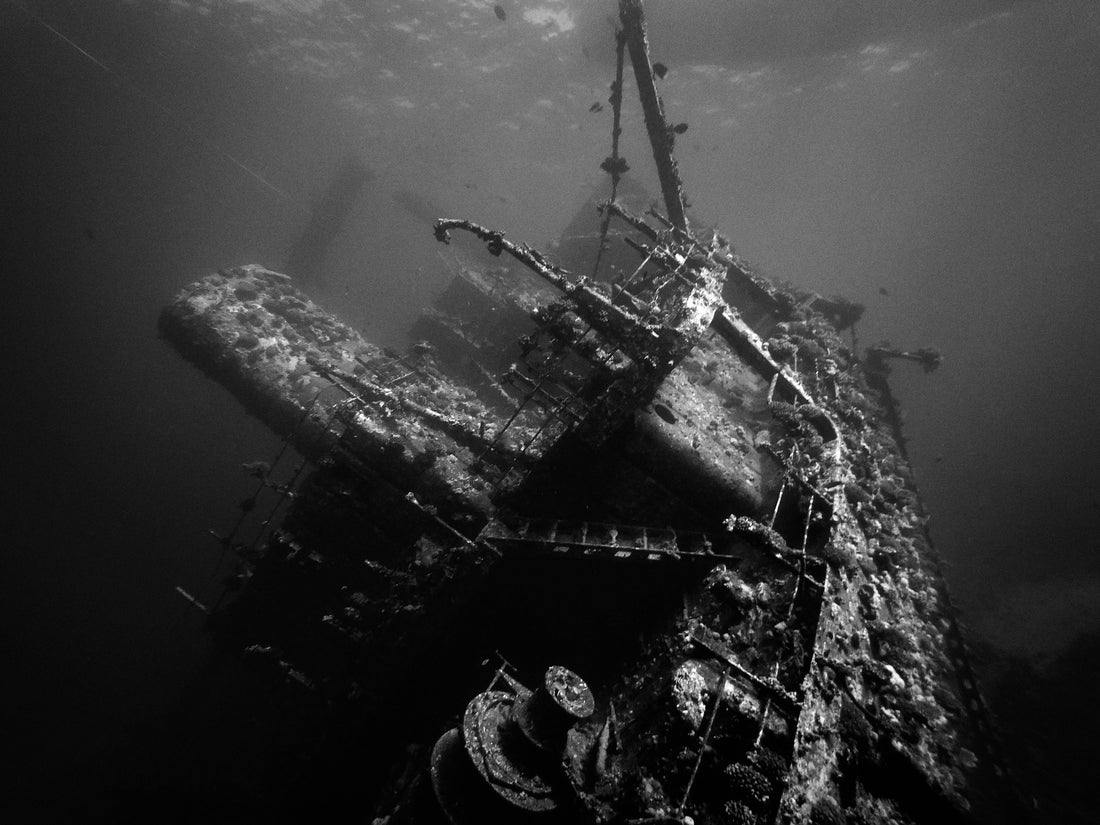
Subsea Magnetic Anomaly Detector for Wreck & Metal Discovery
Share
Unlocking the Ocean’s Hidden Treasures
The ocean floor holds countless mysteries, from sunken shipwrecks and lost artifacts to naturally occurring metal-rich deposits. Traditional methods of deep-sea exploration rely on sonar, but many valuable discoveries remain undetected due to limitations in current mapping technologies. A Subsea Magnetic Anomaly Detector (SMAD) could revolutionize wreck discovery and deep-sea mineral detection by providing high-precision magnetic field mapping, capable of identifying ferrous and non-ferrous metals buried beneath the seafloor.
How It Works
SMAD technology would use a network of highly sensitive magnetometers to scan for disturbances in Earth’s magnetic field. These disturbances can indicate the presence of sunken ships, metallic debris, submerged military artifacts, or even rare meteorite fragments that have settled on the ocean floor. Unlike sonar, which primarily detects shapes and structures, magnetic anomaly detection can identify buried or hidden metallic objects by analyzing their unique electromagnetic signatures.
The system would consist of AUV-mounted or towed sensor arrays for broad-area scanning. AI-powered signal processing would distinguish natural geological features from human-made or extraterrestrial materials. Real-time anomaly mapping would create detailed magnetometric maps of the ocean floor. Deep-water adaptive calibration would adjust for varying sediment depths and mineral compositions.
Applications
Shipwreck and lost artifact discovery could benefit greatly from SMAD, as many historically significant shipwrecks remain undiscovered due to their burial under layers of sediment. SMAD could be used to locate wrecks containing artifacts such as gold, silver, and preserved relics, providing a non-invasive method of deep-sea archaeology. Military forces could use SMAD for mine detection, sunken submarine recovery, and locating lost military hardware. The ability to detect hidden metallic objects at extreme depths could improve naval defense and security operations. Beyond wreck discovery, SMAD could be a powerful tool for locating deep-sea mineral deposits, including manganese nodules, rare-earth elements, and polymetallic sulfides. This could significantly enhance sustainable subsea mining efforts while minimizing environmental disruption. Scientists have already discovered meteorite fragments buried in ocean sediments. A more advanced magnetic detection system could help locate interstellar debris, iron-rich meteorites, or unknown extraterrestrial metals hidden beneath the seafloor.
Challenges and Future Development
While magnetometer technology exists, adapting it for deep-sea exploration presents several challenges. High-pressure resilience is necessary to ensure sensitive equipment can function at extreme depths. Noise reduction and calibration must filter out interference from underwater geological formations. Autonomous operation will enable real-time mapping without surface intervention.
The Future of Deep-Sea Discovery
Developing a fully autonomous, AI-powered SMAD could transform the way we explore the ocean, merging archaeology, geology, and space science in one powerful detection system. As technology advances, the ability to scan, map, and analyze the hidden metallic anomalies of the deep ocean could lead to groundbreaking discoveries, from lost history to untapped natural resources.
With increased investment in ocean exploration and subsea sensing, the next decade could reveal some of the most significant underwater discoveries ever made. Could the SMAD be the key to unlocking the next great era of deep-sea exploration?
Expanding the Capabilities of SMAD Technology
As deep-sea exploration progresses, new adaptations of SMAD technology could expand its usefulness beyond shipwreck discovery and mineral exploration. Researchers are exploring ways to integrate multi-sensor platforms, combining magnetometers with side-scan sonar, hyperspectral imaging, and even deep-sea drilling capabilities. By layering multiple detection methods, scientists could build highly detailed maps of the seafloor that provide comprehensive data on both natural and human-made structures hidden beneath layers of sediment.
One of the most promising applications for advanced SMAD systems is in environmental monitoring. As deep-sea mining projects expand, there is growing concern about the ecological impact of disturbing delicate benthic ecosystems. By equipping SMAD arrays with real-time environmental sensors, researchers could monitor the effects of seabed mining and create detailed impact assessments to ensure compliance with international regulations. Additionally, SMAD technology could be deployed to track the accumulation of metallic pollutants in the deep ocean, offering a new tool for studying industrial runoff and its long-term effects on marine life.
Another exciting frontier is the integration of SMAD technology with autonomous deep-sea vehicles designed for long-duration missions. AI-powered underwater drones equipped with magnetic anomaly detection could patrol remote areas of the ocean for months at a time, continuously scanning for unknown wrecks, hidden geological structures, and potentially valuable mineral deposits. These autonomous systems would eliminate the need for human intervention and allow for large-scale mapping of the most inaccessible parts of the ocean. By combining real-time data transmission with cloud-based AI analysis, researchers could access new discoveries as they happen, without waiting for lengthy recovery missions.
With each breakthrough in deep-sea technology, the potential for SMAD-based discoveries grows. From locating lost history to protecting fragile ecosystems and unlocking new sources of rare materials, magnetic anomaly detection is poised to become a key player in the future of underwater exploration. By refining the accuracy, efficiency, and adaptability of these systems, the mysteries of the deep sea could finally be revealed, paving the way for an entirely new understanding of the ocean’s hidden landscapes.
